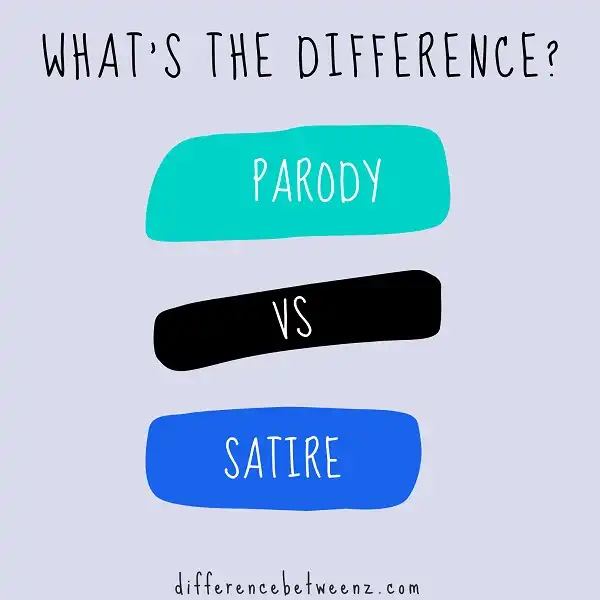There is a fine line between parody and satire, and often people use the two terms interchangeably. However, there is a key difference between the two that sets them apart. Parody specifically imitates another work for comic effect, while satire uses wit and sarcasm to attack an issue or topic. Satire typically has a more serious tone than parody, which is typically used for humor. In essence, parody is using another’s work as the basis for your own comedic purposes, while satire skewers an issue or topic in order to provoke thought or change. They are both effective tools of comedy and social commentary, but it’s important to understand the distinction so that you can use them appropriately.
What is Parody?
A parody is a work that imitates the style of another work in order to make fun of it. It is usually done for comic effect, but can also be used to make a political point. Parodies often use exaggeration and Simplification to caricature the original work. For example, a parody of a serious news story might use exaggeration and ridicule to make its point. Parodies are often protected by copyright law as “fair use.” This means that they can be used without permission from the copyright holder, as long as they meet certain criteria. For example, a parody must not be too long, and it must not change the original work so much that it becomes unrecognizable.
Parodies can be found in all sorts of media, including books, movies, TV shows, and music. Some well-known examples include The Simpsons, which parodies many aspects of American culture, and “Weird Al” Yankovic’s songs, which parody popular music.
What is Satire?
Satire is a literary technique that uses humor, wit, or irony to ridicule people, institutions, or ideas. It is typically used to make a social or political point by highlighting the absurdity of certain behaviors or beliefs. Satire can take many different forms, ranging from verbal jokes and social commentary to more visual mediums like cartoons and artworks. The goal of satire is often to evoke laughter in the reader or audience, but it can also be used to confront serious issues in provocative ways. Whether it’s aimed at individuals, groups, traditional values, or powerful institutions, satire aims to shine a light on ills in society in order to challenge our perceptions and encourage change.
Difference between Parody and Satire
While parody and satire are both modes of writing that use humor to engage and entertain readers, there are some key differences between these two forms. Specifically, parody is defined as a piece of writing that imitates the style or content of another work for comic effect, while satire often takes the form of a narrative with social or political criticism. Additionally, while parody may use exaggeration or distortion to comedic effect, satire typically employs irony, wit, and sarcasm in order to critique real-world issues. For this reason, satirical essays can often be quite provocative, challenging the status quo and encouraging readers to consider different perspectives. Overall, though both parody and satire share an affinity for humor and clever wordplay, they differ in their approach and function within society.
Conclusion
While parody is often mistaken for satire, the two are actually quite different. Satire is a type of humor that uses irony or sarcasm to attack or expose issues in society, while parody specifically copies another work or artist to mock it. By understanding the difference between these two genres, you can create content that is more likely to be seen as humorous and engaging by your audience.


